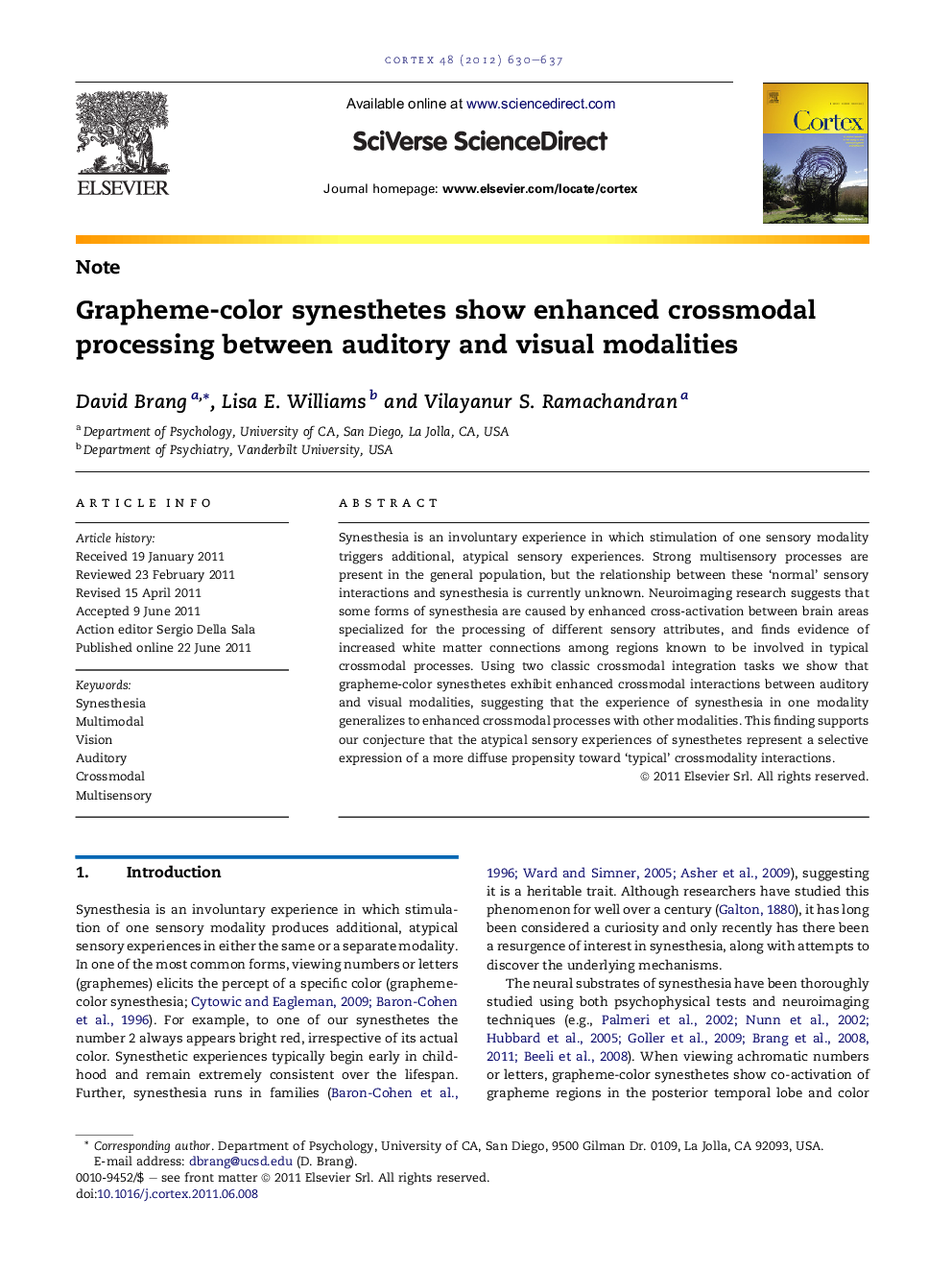| Article ID | Journal | Published Year | Pages | File Type |
|---|---|---|---|---|
| 942122 | Cortex | 2012 | 8 Pages |
Synesthesia is an involuntary experience in which stimulation of one sensory modality triggers additional, atypical sensory experiences. Strong multisensory processes are present in the general population, but the relationship between these ‘normal’ sensory interactions and synesthesia is currently unknown. Neuroimaging research suggests that some forms of synesthesia are caused by enhanced cross-activation between brain areas specialized for the processing of different sensory attributes, and finds evidence of increased white matter connections among regions known to be involved in typical crossmodal processes. Using two classic crossmodal integration tasks we show that grapheme-color synesthetes exhibit enhanced crossmodal interactions between auditory and visual modalities, suggesting that the experience of synesthesia in one modality generalizes to enhanced crossmodal processes with other modalities. This finding supports our conjecture that the atypical sensory experiences of synesthetes represent a selective expression of a more diffuse propensity toward ‘typical’ crossmodality interactions.
► Demonstration of enhanced crossmodal processes in synesthetes. ► First empirical link between synesthesia and typical multisensory engagement. ► Suggests the criticality of connectivity in multisensory processes in general. ► Provides a putative evolutionary hypothesis for synesthesia.
